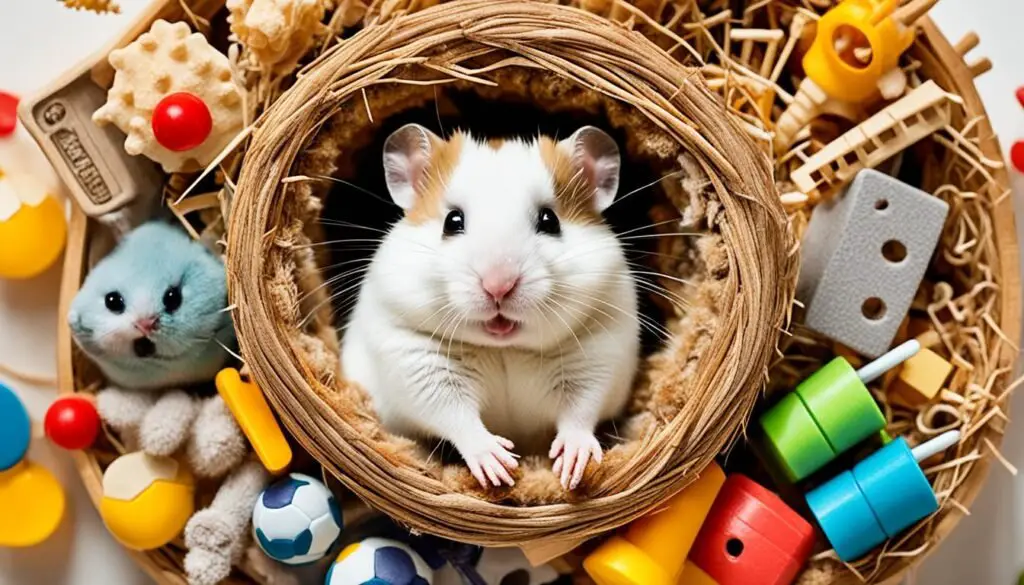As a proud hamster owner, you cherish those precious moments spent with your furry friend. You’ve marveled at their adorable antics, laughed at their comical habits, and formed a special connection that brightens your days.
But what happens when life’s commitments take you away for a couple of weeks? Will your hamster remember you upon your return?
The memory of a hamster might seem fleeting, but there’s more to these little creatures than meets the eye. Understanding their behavior and taking the right steps can help you forge an unbreakable bond with your hamster, even after an extended absence.
In this article, we’ll explore the fascinating world of hamster memory, pet bonding, and forming a deep connection with your furry companion. Whether you’re a new hamster owner or a seasoned enthusiast, these insights will help you navigate the path to a lifelong friendship with your hamster.
So, let’s dive in and discover the secrets to a lasting bond that will make your hamster’s heart flutter with joy!
Understanding Hamster Behaviors and Communication
Hamsters are fascinating creatures that communicate through various behaviors, sounds, and body language. By paying attention to their actions, you can gain insights into their well-being and overall happiness. Let’s explore some common hamster behaviors and what they signify.
Normal hamster behaviors include being active at night, chewing on objects to grind down their teeth, stuffing their cheeks with food, and burrowing and hiding. These behaviors indicate that your hamster is comfortable and happy in its environment. For example, the instinct to burrow and hide is a way for hamsters to create a sense of security and privacy.
However, it’s important to be aware of signs that may indicate your hamster is unwell. Unusual behaviors such as hibernating, lack of energy, not eating or drinking, not chewing, and excessive hiding may be red flags that something is wrong. If you notice any of these signs, it’s crucial to consult a veterinarian who specializes in small animals to get professional advice.
By understanding your hamster’s behaviors and being observant of any changes, you can better care for their physical and emotional well-being. Remember, each hamster is unique, so it’s essential to establish a baseline of their typical behaviors and monitor for any deviations.

Talking to Your Hamster
In addition to their behaviors, hamsters also communicate through sounds. They may squeak, chirp, or make soft clicking sounds to express various emotions. While it’s challenging to decipher the exact meaning behind each sound, you can use them as cues to better understand your hamster’s mood and needs. By spending time observing and interacting with your hamster, you’ll become more attuned to their unique communication style.
Taming and Building Trust with Your Hamster
Taming a hamster requires time, patience, and trust-building. To begin, allow your hamster to acclimate to their new environment before attempting any handling. Start by spending time near their cage, talking to them gently, and offering treats through the cage bars. This helps your hamster become familiar with your presence and associate you with positive experiences.
Once your hamster is comfortable with this interaction, you can gradually progress to the next step. Place treats on your open hand inside the cage and allow your hamster to climb onto your hand to retrieve them. This step helps them associate your hand with rewards. It’s important to be calm and steady during this process to avoid startling your hamster.
As your hamster becomes more accustomed to climbing onto your hand, you can gently lift them up, but only for short periods at first. Gradually increase the duration as your hamster becomes more comfortable with being held. Pay attention to their body language and cues to ensure they are not stressed or uncomfortable.
By consistently following these steps, you can build a strong bond with your hamster and gain their trust. Remember to be patient and understanding, as each hamster has its own personality and may require different amounts of time to feel comfortable. As your hamster becomes more tame, you’ll notice happy behaviors such as curiosity, exploring their environment, and enjoying interactions with you.
